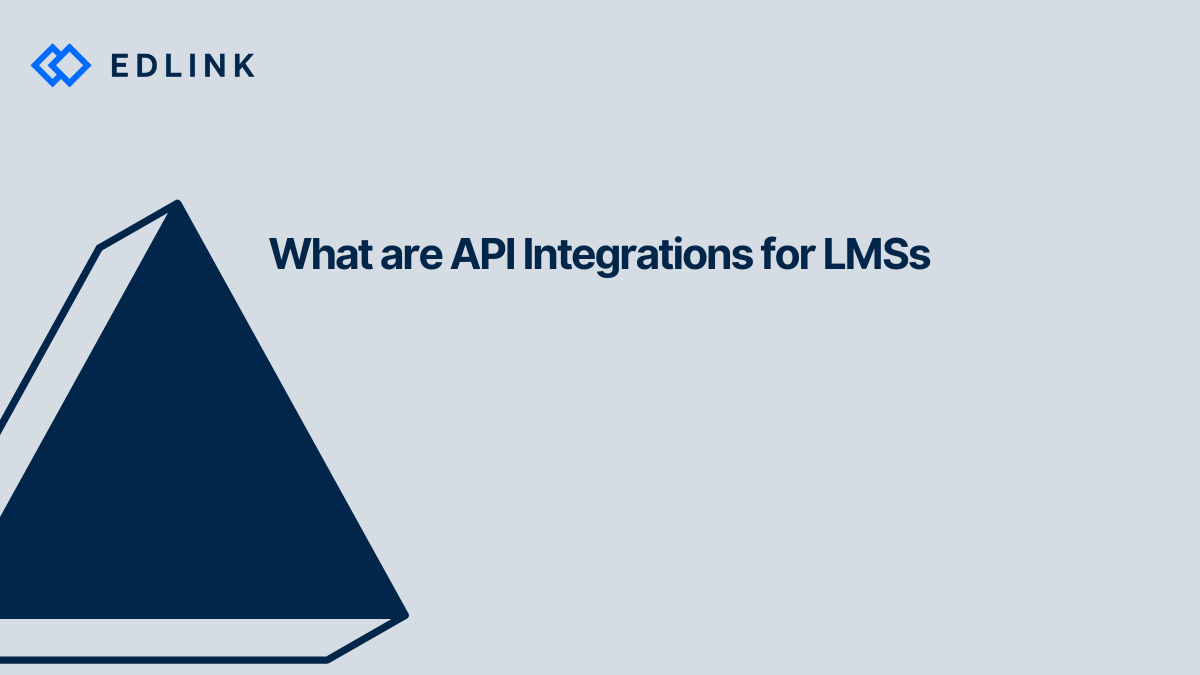We’ll address:
- What’s an API?
- How do API integrations work?
- How do you start building API integrations?
What’s an API?
An API – or application programming interface – is a set of systems that allow one system to access and communicate with another. All of the major LMSs have an API that allows for the transfer and retrieval of data from the platform.
APIs can allow applications to retrieve information about an authenticated user directly from the LMS. This data can include a list of all courses and any rosters that the user manages. Users can also pass back information, such as assignments and grades, from the application back to the LMS. As long as the user has an active and authenticated token from the LMS, all of these actions can be performed without being actively present in the LMS.
How do API integrations work?
API-integrated-third-party applications are hosted and accessed outside of the LMS. The application will typically have a user sign-in method available based on the user’s LMS. Once the user logs in with their LMS credentials, the application receives a token that verifies the user’s identity and allows the user into the application. As long as the token is valid, the user can send and retrieve course and student data to and from their LMS via the application. The user does not have to be an administrator of the LMS in order to enable access for themselves and their students.
Students and teachers can login to the integrated application with defined roles through the API. Depending on how the integration has been developed, users may be able to interact with their LMS through the app. For example, the application could allow students to save submissions to assignments. Teachers can then grade these assignments and pass the scores back to their LMS. Teachers may also be able to pull a list of all currently rostered students in their course, regardless of whether or not the student has accessed the application.
How to start building API integrations?
Each LMS has its own proprietary API. This means that edtech developers generally can't reuse an API integration previously written integrations to connect their app to another LMS. Furthermore, each LMS has quirks about implementing their API. Several articles on our blog highlight these issues to help edtech developers to avoid potential roadblocks.
Check out the links below for more information on the challenges of integrating with each LMS!
Read More on Integrations
Here are other articles we’ve written on building integrations to help you on your journey:
What to know about Single Sign-On for Education
Single-tenant vs Multi-tenant: What’s better for your app’s security
Case Study: Schoolrunner
Why would I Work with Edlink Instead of Just Building My Own LTI Application?
District Onboarding with Edlink
Want to Learn More about Edlink?
If you're looking for a partner who can help guide you through developing LMS integrations (like these), then let’s introduce ourselves. We’re Edlink!

